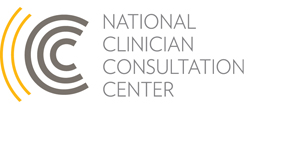Case of the Month: Cesarean Delivery for Women Living with HIV
Case Summary
An obstetrician called the Perinatal HIV Hotline regarding a 20 yo patient who was perinatally-infected with HIV and is now 38 3/7 weeks into her first pregnancy. The patient was taking co-formulated abacavir/lamivudine/dolutegravir prior to pregnancy, and was maintained on this combination for the duration of the pregnancy. She has been adherent and virologically suppressed throughout pregnancy. She now presents to Labor & Delivery reporting leakage of fluid. Exam reveals intact membranes. The patient is requesting elective cesarean delivery because she wants to minimize the risk of HIV transmission to the baby.
The caller wants to know whether there is any benefit to an elective cesarean delivery in this scenario.
CCC Consultant Response
The best way to prevent perinatal transmission of HIV is with suppressive maternal ART throughout pregnancy. In a cohort of 2,651 infants born to women who were receiving ART before conception, continued ART throughout pregnancy, and delivered with a plasma HIV-RNA <50 copies/mL, there were no cases of perinatal HIV transmission.[1][2] The caller can reassure the patient that she has already taken the most effective steps to prevent HIV transmission, and that there is no additional benefit to a cesarean delivery. The DHHS Perinatal Guidelines state, “it is unclear whether scheduled cesarean delivery confers any additional benefit in reducing transmission. Furthermore, there is evidence that complication rates for cesarean deliveries are higher in HIV-infected women compared with HIV-uninfected women[3].… Women should be informed that there is no evidence of benefit for scheduled cesarean delivery performed solely for prevention of perinatal transmission in women receiving ART with HIV RNA ≤ 1000 copies/mL and that it is not routinely recommended”.[4]
However, if the patient had a high viral load (≥1,000 copies/mL) and was in early labor or had ruptured membranes, we would have to carefully consider risks and benefits before making a decision about cesarean delivery. At this time, unlike elective cesarean delivery, there is no evidence showing that cesarean delivery performed after the onset of labor or rupture of membranes reduces the risk of intrapartum HIV transmission.[5][6] Management should be individualized, and “consultation with an expert in perinatal HIV… may be helpful in rapidly developing an individualized plan”.[4]
Going back to the case above, the CCC consultant recommended that the mother continue oral antiretrovirals and be counseled to avoid breastfeeding. Although the caller was not directly managing the exposed infant, the consultant also addressed HIV prophylaxis and testing for the exposed infant. The baby should receive post-exposure prophylaxis with zidovudine – in this case, given the very low risk of HIV transmission, 4 weeks would be sufficient. In cases where the baby has a higher risk of HIV acquisition, the baby should receive 6 weeks of zidovudine, as part of a combination infant prophylaxis regimen. Birth HIV PCR testing is optional for low-risk infants, but would be used to identify in utero transmission in a higher risk situation, and can be reassuring to parents/caregivers (and providers) if negative. Additional testing at two weeks of life and beyond will be necessary to assure that the baby is not infected with HIV.
[1] Mandelbrot L, Tubiana R, Le Chenadec J, et al. No perinatal HIV-1 transmission from women with effective antiretroviral therapy starting before conception. Clinical Infectious Diseases. 2015 Dec 1;61(11):1715-25.
[2] Briand N, Jasseron C, Sibiude J et al. Cesarean section for HIV-infected women in the combination antiretroviral therapies era, 2000–2010. American Journal of Obstetrics and Gynecology. 2013;209(4):335-e1.
[3] Kourtis AP, Ellington S, Pazol K, Flowers L, Haddad L, Jamieson DJ. Complications of cesarean deliveries among HIV-infected women in the United States. AIDS. 2014;28(17):2609-2618.
[4] Panel on Treatment of HIV-Infected Pregnant Women and Prevention of Perinatal Transmission. Recommendations for use of antiretroviral drugs in pregnant HIV-1-infected women for maternal health and interventions to reduce perinatal HIV transmission in the United States. Available at https://aidsinfo.nih.gov/contentfiles/lvguidelines/PerinatalGL.pdf. Accessed Oct 31, 2016.
[5] Peters H, Byrne L, De Ruiter A, et al. Duration of ruptured membranes and mother-to-child HIV transmission: a prospective population-based surveillance study. 2016 May;123(6):975-81.
[6] Eppes C. Is it time to leave the avoidance of rupture of membranes for women infected with HIV and receiving cART in the past? BJOG: An International Journal of Obstetrics & Gynaecology. 2015;123(6):982-982.
Because CCC consultations are based on information provided by the caller or clinician accessing the online consultation center, without the benefit of a direct evaluation or examination of the patient, consultations are intended to be used as a guide. They do not constitute medical advice and are not to serve as a substitute for medical judgment. This Case of the Month includes consultation based on the most up-to-date evidence at the time of its publication. To learn about current recommendations, please call one of our clinical consultation lines.
 University of California, San Francisco |
University of California, San Francisco |
